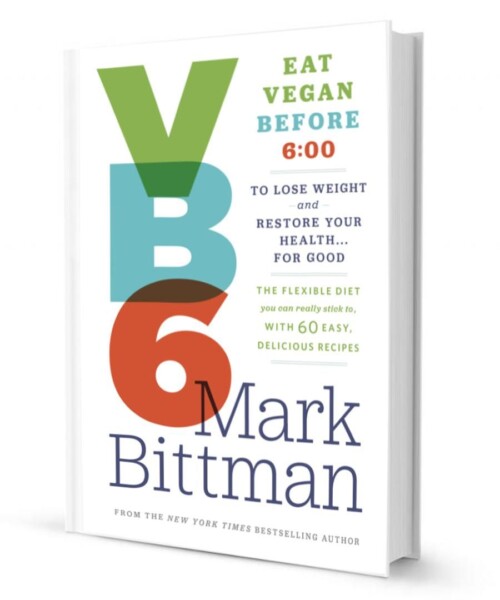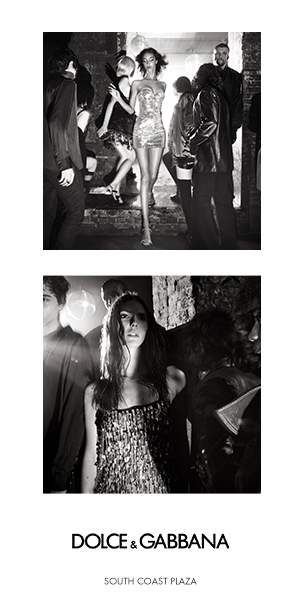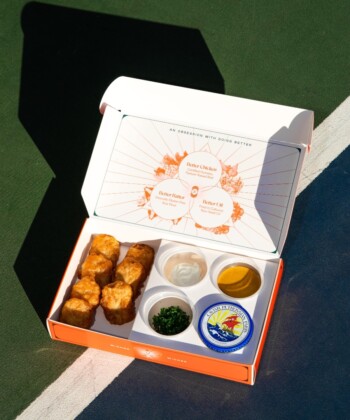 People turn to veganism for a number of reasons, but not usually because it’s particularly easy—until Mark Bittman wrote a book about doing it part-time. The New York Times food columnist dodged a health-threatening bullet (and kept off over 35 pounds) when, six years ago, he went on a plants-based diet by day, and ate as a free man at dinner. It’s still how he eats today, and he calls it VB6: Eat Vegan Before 6:00.
People turn to veganism for a number of reasons, but not usually because it’s particularly easy—until Mark Bittman wrote a book about doing it part-time. The New York Times food columnist dodged a health-threatening bullet (and kept off over 35 pounds) when, six years ago, he went on a plants-based diet by day, and ate as a free man at dinner. It’s still how he eats today, and he calls it VB6: Eat Vegan Before 6:00.
Its message is a simple one: eat more fruits, vegetables and whole grains; less meat and processed foods; and enjoy your favorite foods occasionally. It’s not a new message by any means, but what’s refreshing (and practical) about Bittman’s approach is that it doesn’t aim for perfection. On the book jacket, he calls VB6 the “flexible diet,” not quite the word an omnivore would associate with veganism. We ask Bittman about “cheating” and what VB6 looks like for the typical New Yorker.
You started VB6 as a way to revert back to good health, but six years later you’re still following the plan and turning it into a mainstream diet. Did you foresee any of this happening when you began?
Not at all. I was just trying to use my doctor’s advice and get my health in line. He’d suggested a vegan diet; I thought he was crazy. But after a few months of eating vegan before 6 p.m., I had lost over 35 pounds and I felt great. I figured the diet would probably work for other people as well.
As someone whose career—and life—revolves around food and eating, was the prospect of being a permanent, albeit part-time, vegan ever daunting?
Daunting—no bacon and eggs in the morning—but easy. Because the gratification was there, just not all the time. I put my health first without feeling limited or like I was breaking any rules when I did have the occasional cheeseburger.
In your book, you’re very gracious when discussing “breaking the rules.” With such a flexible diet, how do you keep yourself from over-indulging or satisfying one too many cravings?
Listen, some people are going to eat what they’re going to eat, but if you’ve already shifted two-thirds of your diet to mainly fruits and veggies and whole grains, then you’re still doing yourself—and the planet—a huge favor. If you cheat 20 percent of the time you’re still doing great. If you cheat 80 percent of the time—that’s a different story; you’re not doing VB6.
Why is there better chance of weight loss and sustainable, life-long change with VB6?
Many diets are too strict; they cause feelings of guilt when you fall off track, and they don’t let you back on. Nothing is easy or simple. VB6 promotes a simple message: eat mostly fruit, vegetables and whole grains, sometimes meat, and if you must, junk as the occasional indulgence. You don’t need a points system to know which foods you should eat, and if you’re not doing it 100 percent you can still do it well.
One of the main concepts of VB6 is that meat should be used as a garnish—or a “treat”—in our diets, but how do you get the average all-American carnivore to think that way?
Well, some think that by telling people “stop eating meat!” that they’ll stop eating meat. Unfortunately, it’s not as easy as that. I found that the more I learned about the meat industry in America, the easier it was to stick to my less-meat diet. (Industrialized livestock production, for example, appears to be accountable for a fifth or more of the greenhouse gases that are causing climate change. And don’t get me started on how we treat the livestock.) I also learned that we can get all the necessary proteins and vitamins from a plant-based diet.
In your book you lay out six categories of eating personalities from the Restaurant Regular to the Grazer and suggest strategies for approaching VB6 for each. If we could add the New Yorker to the list—someone who spends little time in the kitchen, starts her day with coffee, gets lunch outside the office and throws in a workout somewhere before a happy hour or other social event post 6 p.m.—what would be her best strategies?
Vegan options are popping up everywhere. If I were that New Yorker (which, by the way, I am), I’d suggest not skipping breakfast: add a banana, apple or cup of oatmeal with soy milk to that morning coffee. For lunch, grab a salad with as many fun vegetable, fruit, bean or nut toppings as you like, or head out to your favorite eatery—I almost guarantee that in New York there will be a tasty vegan option. Then, as happy hour roles around, hit pause on your vegan diet and enjoy your evening.
For the New Yorker just starting out on VB6, what are her best bets for stocking the pantry?
Well if we’re sticking to the theory that this New York eater doesn’t cook at home, then I think what’s most important are the snacks you have around for the mid-afternoon slump or post-dessert craving. I suggest stocking your pantry with fresh fruit, nuts and for emergencies dried fruit and whole-grain crackers—and peanut butter! You want snacks that are high in protein to keep you full. I often keep toasted pepitas and peanuts in my office.
For spring and summer coming up, what are your favorite VB6 recipes?
I’m a big fan of spiked guacamole—guacamole loaded with vegetables, like radishes, lettuce, and tomato. Maybe serve that with black bean tacos with cabbage and you’re in business.
Where do you shop for your go-to ingredients?
You can shop anywhere. I go to Fairway, which is in my neighborhood, but I have no problem with more conventional [supermarkets].
You mentioned a few of your own “cheats,” like half-and-half in coffee. What are some of the other common cheats you’ve seen or heard VB6-ers allow?
Chips in the afternoon, sugar in coffee, little stuff. If it gets big, you have to take a look at it. Chocolate is a great treat because it’s got sugar in it but is hardly bad for you. And most people love it.
What has surprised you the most since starting VB6?
How well it works, and how easy it is. It’s been six years for me, and I’m never going back.










































